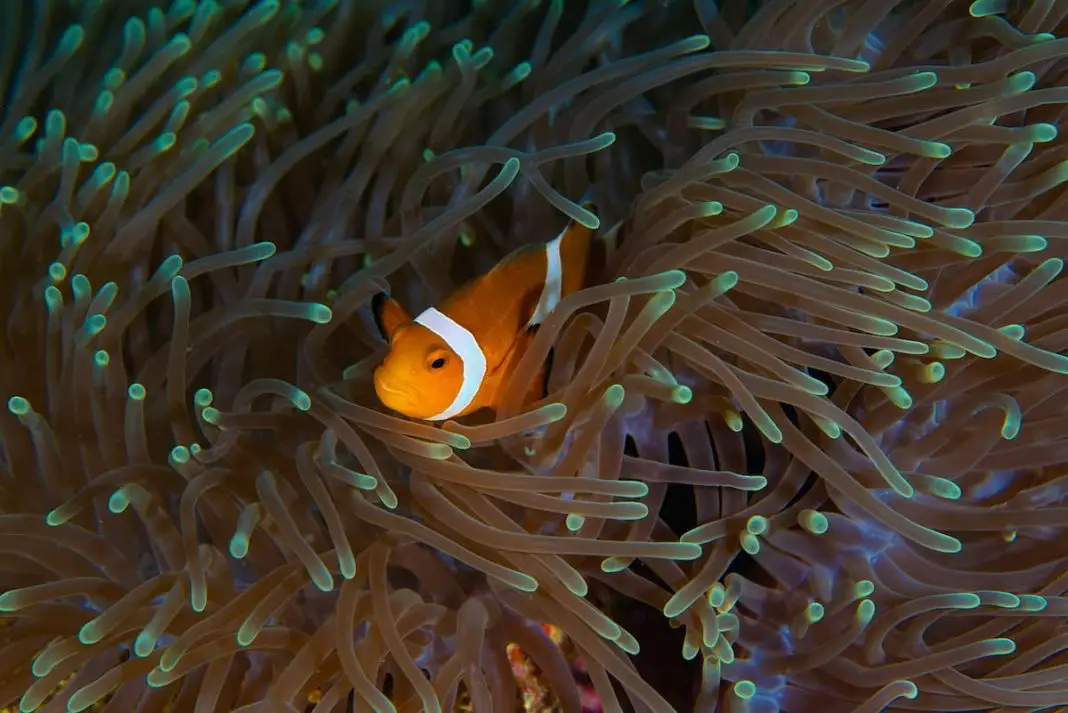Most people are surprised to hear that clownfish aren’t the best swimmers in the ocean, which is why they spend much of their time hiding in a sea anemone that they’ll call home. Once they venture from their anemone, their swimming patterns start to become erratic. It’s not unusual to see a clownfish swimming sideways. Although they can swim quickly for short bursts, they can’t keep up this speed to avoid a predator for too long.
With that, let’s find out what is the right water flow for clownfish.
Although clownfish probably won’t be the best swimmers in your tank, they still need a wave maker in the aquarium. They prefer being kept in places that imitate their natural habitat. Wave makers use a water surge that generates waves similar to that from seas and oceans and are used to replicate their natural inhabitant.
Can There Be Too Much Flow For A Clownfish?
Clownfish are generally shy fish and normally avoid areas that have high flows within an aquarium. To keep your clownfish happy, you should try to set a wave maker to a lower pressure to benefit your clownfish.
Having too much flow in your tank could be damaging to the clownfish as they would be unable to act freely and could be affected by the high water current in the water, resulting in the clownfish becoming stressed.
Nevertheless, water flow is still highly important for a saltwater aquarium as the fish tank as it helps to prevent the tank from experiencing static water that would result in the build-up of poisonous ammonia and other debris that would have otherwise been moved around in the water and diffused.
Do Clownfish Benefit From Using A Wave Maker?
One of the biggest benefits that can be derived from keeping a wave maker in your aquarium ranges from allowing a circular vortex in your aquarium to keeping the water moving to assist in generating enough oxygen for the clownfish.
Other advantages of using a wave maker for clownfish include;
- Good water flow helps to keep waste and debris from getting stuck in the dead spot of the tank.
- A wave maker helps clownfish as it reduces stress by keeping them busy and actively swimming rather than sticking to a spot.
- It helps in surface movement by creating waves on the surface of the water, which helps to transfer oxygen throughout the tank; which clownfish need. Clownfish could become stressed if there wasn’t enough oxygen in the tank.
- Wave makers help to keep clownfish happy as they would be able to swim happily (as long as the current isn’t too strong) in the tank whilst feeling like they are in their natural habitat.
Are There Disadvantages To Using A Wave Maker For Clownfish?
A wave maker could quickly result in too much current for a clownfish, causing stress. It can sometimes scatter fish food all over the tank, making it challenging for a clownfish to feed.
A wave maker that’s highly pressured in a small tank could result in a situation where the clownfish would be unable to relax as it would feel like the pressure on its skin is too much, which would make it feel agitated.
Getting The Right Flow In A Tank
When positioning a wave maker in a tank, you need to ensure that your wave pump is indirectly pumping water to the corals and fish in the tank.
You can position a wave maker in your tank by following these tips;
- Mount the wave maker in a space in the middle to upper portions of the tank.
- Make sure that it’s not placed too low where it might blow the substrate around in your tank.
- Ensure that it’s not placed too close to the top of the surface of the tank as this could result in the wave maker sucking air in or generating waves in the water that would be far too big for the tank.
- You can place a wave pump in an area that’s shadowy in the tank pump due to the lighting of your tank. Doing this would draw less attention to them and prevent the clownfish from being hit by an unduly heavy current.
- It’s important to position your wave maker in a manner that would not create waves that would directly be affecting your corals as this could damage the soft tissue of the corals whilst also ensuring that they aren’t put in an area that would result in the sucking up of the long tentacles of the corals.
What’s The Best Strength To Set A Wave maker To?
The strength of a wave maker should typically be between 2000-3000 GPH, although there are many depending factors such as the type of fish you’re keeping in the tank and the water needs of the corals that you have in the tank.








